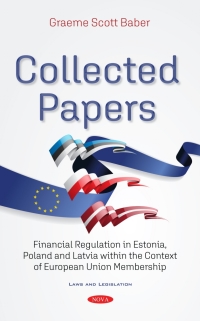Question
1- Which mutual fund would have the least amount of diversifiable risk? a) Drugs Galore a fund that concentrates on investing in the stock of
1- Which mutual fund would have the least amount of diversifiable risk? a) Drugs Galore a fund that concentrates on investing in the stock of pharmaceutical companies. b) A mutual fund that is 30% invested in Kroger Company, 40% invested in Sony, and 30% invested in Audi. c) A mutual fund consisting of the stock of Japanese companies. d) A mutual fund consisting of 40 randomly selected stocks from all over the world.
2- The SML (Securities Market Line) and a stocks position on it can change overtime as the economy or a firms situation changes. When a countrys economy and financial institutions experience a major crisis, what happens to the SML? a) the entire line shifts up by the same amount at all risk levels (no change in slope) b) the slope of the SML increases (the risk premiums on high beta stocks increasing the most) c) the stock changes its positions on the line d) none of the above
3- The SML (Securities Market Line) and a stocks position on it can change overtime as the economy or a firms situation changes. When prices increase by 5% in a year, what happens to the SML? a) the entire line shifts up by the same amount at all risk levels (no change in slope) b) the slope of the SML increases (the risk premiums on high beta stocks increasing the most) c) the stock changes its positions on the line d) none of the above
4- The SML (Securities Market Line) and a stocks position on it can change overtime as the economy or a firms situation changes. When a company such as Citi has a dramatic change in the perceived riskiness of future stock returns, what happens to the SML? a) the entire line shifts up by the same amount at all risk levels (no change in slope) b) the slope of the SML increases (the risk premiums on high beta stocks increasing the most) c) the stock changes its positions on the line d) none of the above
5- Return earned by owning a stock over a given year is ____________________________ divided by the value of the stock at the beginning of the year. a) the dividend minus any change in stock price
b) the dividend plus any change in stock price
c) interest plus any change in stock price
d) interest minus any change in stock price
6- Risk is: a) is uncertainty b) is the chance that an outcome other than the expected outcome will occur c) for an investor includes the possibility of earning a higher return than expected d) all of the above
7- A listing of all possible outcomes or events, with a probability assigned to each outcome a) is a probability distribution
b) standard deviation
c) risk premium
d) is the security market line
8- Stand-alone risk (the risk an investor that owns only one investment is exposed to) is measured by a) standard deviation
b) the correlation coefficient
c) beta
d) all of the above
Step by Step Solution
There are 3 Steps involved in it
Step: 1

Get Instant Access to Expert-Tailored Solutions
See step-by-step solutions with expert insights and AI powered tools for academic success
Step: 2

Step: 3

Ace Your Homework with AI
Get the answers you need in no time with our AI-driven, step-by-step assistance
Get Started


